Grand Hall FREEDOM 326X Owner's manual
- Category
- Barbecues & grills
- Type
- Owner's manual
This manual is also suitable for

These instructions are a
guide to assembling and
using the Freedom 321C
and Freedom 326C barbecue.
Please read carefully, and
retain for future reference.
Only to be used outdoors. Illustration may
vary from barbecue contained in carton.
FOR YOUR SAFETY.
1. Do not store or use
petrol or other flammable
vapours and liquids in the
vicinity of this or any other
appliance.
2. A gas cylinder not
connected for use must not
be stored in the vicinity of
this or any other appliance.
FOR YOUR SAFETY.
IF YOU SMELL GAS:
1. Shut off gas to the
appliance, if possible.
2. Extinguish any open flame.
3. Open hood.
4. If odour continues,
immediately call your gas
supplier or fire department.
Operating and assembly instructions
Portable Gas
Barbecues

GENERAL INFORMATION
2
2
The following minimum clearances from combustible materials must be
maintained when barbecue is in use:
top – 1000 mm, rear – 450 mm, sides – 250 mm.
Openings at the rear and sides of the appliance provide air for
combustion and must not be obstructed.
CLEARANCES
General Information 2
Safety 3-5
Pre-Assembly 6
Assembly 7-12
Assembly – general 13-16
Operation 17-20
Fault Finding 21
Maintenance 22-24
Parts Diagram / List 26-29
Contacts 32
TABLE OF CONTENTS
Height – All models: hood closed 1215 mm, hood open 1590 mm
Width – Freedom 321C: 1462 mm
Freedom 326C: 1690 mm
Depth – All models: hood closed 660 mm, hood open 720 mm
OVERALL DIMENSIONS
Appliance specifications can be found on the data label attached to the side
panel of the barbecue body.
SPECIFICATIONS
This appliance is certified to AS 4557 by the Australian Gas Association.
Barbecues must be used in accordance with the installation
requirements of your local gas supply authority, and the appropriate
installation standard AS5601.
GAS INSTALLATION CODES
The regulator and hose assembly supplied with the barbecue are suitable
for use with bottled gas.
This regulator is adjusted to have an outlet pressure of 2.75 kPa for
connection to a gas cylinder only. The regulator and hose assembly supplied
with the appliance must be used. Replacement regulator and hose
assemblies must be those specified by the appliance manufacturer.
When connecting the hose and regulator assembly to the gas cylinder,
take care to avoid unnecessary twisting of the flexible hose. Also, take
care to avoid a loose connection with the gas cylinder. After the assembly
has been secured, turn on the gas and check for leaks by brushing a liquid
detergent and water solution over all visible and accessible gas line
connections. Include checking those connections which were made by your
supplier. The presence of bubbles will indicate a gas escape. DO NOT
TEST FOR GAS ESCAPES WITH AN OPEN FLAME. If you
are unable to correct the leak by tightening the connections, turn
off the gas and contact your place of purchase immediately.
Always ensure the appliance is kept away from flammable materials
and the gas cylinder clear of any heat source. When changing over from
an empty gas cylinder to a full one, make sure this procedure is carried
out in a flame free atmosphere.
Inspect the gas hose assembly when exchanging the gas cylinder,
or at least once a year, whichever is more frequent. If the ‘O-Ring’ or PVC
hose is cracked, cut, abraded or damaged in any way, the appliance must not
be operated. The complete assembly must be replaced if damaged and
when statutory conditions require it. Contact your place of purchase if
uncertain.
HOSE AND REGULATOR SAFETY
NEVER OPERATE THIS BARBECUE
WITHOUT A REGULATOR.
• FAILURE TO COMPLY WITH THESE
INSTRUCTIONS COULD RESULT IN A FIRE
OR EXPLOSION WHICH COULD CAUSE
SERIOUS BODILY INJURY, DEATH OR
PROPERTY DAMAGE
• ACCESSIBLE PARTS MAY BE VERY HOT
• KEEP YOUNG CHILDREN AWAY
• ANY MODIFICATION OF THIS
APPLIANCE MAY BE DANGEROUS
• DO NOT MOVE THIS APPLIANCE
DURING USE
• TURN OFF THE GAS SUPPLY AT THE GAS
CYLINDER AFTER USE
• READ THE INSTRUCTIONS BEFORE USING
THE APPLIANCE
• PARTS SEALED BY THE MANUFACTURER
MUST NOT BE ALTERED IN ANY WAY
• THIS BARBECUE IS ONLY TO BE
USED OUTDOORS.
Purchased from
Date purchased
Serial No.
NOTE:
Sales docket must be kept as proof of purchase date.
Barbecues for use with bottled gas are labelled ‘Universal LPG’ or
‘Propane’. Barbecues for use with natural gas are labelled ‘Natural Gas’
and must be installed by an authorised person. Check the gas type sticker
attached to the barbecue. Check that the label matches the gas type to
be used.
Your barbecue is preset at the factory to operate on bottled gas only,
unless specified otherwise.
FOR CUSTOMER REFERENCE
(Record and file in a safe place)

SAFETY
3
3
FOR YOUR SAFETY:
• DO NOT STORE OR USE PETROL OR
OTHER FLAMMABLE VAPOURS AND
LIQUIDS IN THE VICINITY OF THIS OR ANY
OTHER APPLIANCE
• DO NOT STORE EMPTY OR FULL SPARE
GAS CYLINDERS UNDER OR NEAR THIS
OR ANY OTHER APPLIANCE
• KEEP THE GAS HOSE AWAY FROM HOT
SURFACES. PROTECT GAS HOSE FROM
DRIPPING GREASE.
AVOID UNNECESSARY TWISTING OF
HOSE. VISUALLY INSPECT HOSE PRIOR
TO EACH USE FOR CUTS, CRACKS,
EXCESSIVE WEAR OR OTHER DAMAGE.
REPLACE HOSE, IF NECESSARY
• NEVER TEST FOR GAS LEAKS WITH A LIT
MATCH OR OPEN FLAME
• NEVER LIGHT BARBECUE WITH LID ON OR
HOOD CLOSED
• NEVER LEAN OVER COOKING
SURFACE WHILE LIGHTING BARBECUE
• USE GOOD QUALITY INSULATED OVEN
MITTS WHEN OPERATING BARBECUE
• NEVER ALTER OR MODIFY THE
REGULATOR OR GAS SUPPLY ASSEMBLY
• THIS BARBECUE MUST NOT BE USED
INDOORS.
DANGER – IF YOU SMELL OR HEAR
THE HISS OF ESCAPING GAS FROM
THE GAS CYLINDER:
• KEEP CLEAR OF THE GAS CYLINDER
• TURN ALL CONTROLS ON THE BARBECUE
TO ‘OFF’, IF SAFE TO DO SO
•
EXTINGUISH ANY OPEN FLAME
•
REMOVE LID OR OPEN HOOD
•
IF ODOUR CONTINUES, IMMEDIATELY
CALL YOUR GAS SUPPLIER OR FIRE
BRIGADE.
READ CAREFULLY BEFORE
ASSEMBLING AND OPERATING
YOUR BARBECUE.
NEVER CONNECT AN UNREGULATED
GAS CYLINDER TO YOUR BARBECUE.
• NEVER STORE YOUR GAS CYLINDER
INDOORS
• FOR STORAGE AND CYLINDER
EXCHANGE, DISCONNECT HOSE AT THE
CYLINDER ONLY. DO NOT DISCONNECT
HOSE FROM THE APPLIANCE.
If you store your barbecue indoors, ALWAYS disconnect and remove gas
cylinder FIRST, and store gas cylinder safely outside. Gas cylinders must
be stored outdoors in a well ventilated area out of reach of children, and
must not be stored in a building, garage or any other enclosed area.
This is a low pressure barbecue and must only be used with the hose and
regulator supplied.
Your barbecue is designed for use with a 9 kg gas cylinder. Ensure
gas cylinder conforms to Australian Standard AS2469 and is less than 10
years old, or re-certified if older than 10 years.
DO NOT CONNECT YOUR BARBECUE TO A GAS
CYLINDER LESS THAN OR EXCEEDING 9 kg CAPACITY.
GAS CYLINDER USE AND SAFETY
SERVICING
ANY OF THE FOLLOWING SIGNS MAY
INDICATE THAT THE APPLIANCE IS NOT
OPERATING PROPERLY AND MAY NEED
SERVICING:
• EXCESSIVE YELLOW FLAME
• IRREGULAR SIZE OF FLAME
ACROSS BURNER
• ‘POPPING’ OF FLAME
• SOOTING
• ABNORMAL NOISE(S)
• HISSING SOUND.
NOTE:
Before requesting service,
please refer to page 21 ‘Fault Finding’.
NOTE:
The connection to
the gas cylinder is an
‘ANTI-CLOCKWISE’ connection. Ensure the connection is
Ensure the connection
is tightened firmly. Normally
only 1-1
1
/2 threads of the hose
assembly connection should
remain visible.
The gas cylinder should be filled by a reputable gas dealer, or exchanged
at a reputable gas cylinder exchange outlet. Gas cylinders should be
visually inspected and re-qualified periodically.
Always keep gas cylinder in an upright position. Always close the
cylinder valve when the barbecue is not in use.
Do not subject the gas cylinder to excessive heat.
Direction for
tightening
Keep children away from barbecue during use and until barbecue has
cooled after you are finished. Do not allow children to operate barbecue
or to swing on handle.
PROTECT CHILDREN

SAFETY
4
4
NEVER CHECK FOR LEAKS WITH
A FLAME.
IF YOU HAVE A GAS LEAK YOU
CANNOT RECTIFY, TURN OFF THE GAS
AT THE SOURCE. CONTACT THE
MANUFACTURER OR PLACE OF
PURCHASE.
ALWAYS CHECK FOR GAS LEAKS
EACH TIME YOU USE YOUR BARBECUE.
1. Make liquid detergent solution by mixing one (1) part liquid
detergent and four (4) parts water.
2. Turn burner control(s) to ‘OFF’, then turn on gas at source.
CHECKING FOR GAS LEAKS
You should follow this procedure after any of the following:
• Not having used the barbecue for an extended period of time,
• Initial assembly of barbecue,
• Any disconnection and reconnection of hose assembly,
• Changing gas cylinder,
• Upon re-connecting gas cylinder after it has been disconnected for storage.
4 parts water
Open 1/4 - 1/2
1 part liquid
detergent
3. Apply the liquid detergent solution to all visible and accessible
gas connections, including the connection to the gas cylinder.
Bubbles will appear in the liquid detergent solution if
connections are not properly sealed. Tighten or rectify as
necessary.

The following diagrams are examples of outdoor areas.
These same principles apply to canopy or shaded cloth areas.
THIS APPLIANCE SHALL ONLY BE USED IN AN ABOVE GROUND OPEN AIR SITUATION WITH NATURAL
VENTILATION, WITHOUT STAGNANT AREAS, WHERE GAS LEAKAGE AND PRODUCTS OF COMBUSTION
ARE RAPIDLY DISPERSED BY WIND AND NATURAL CONVECTION.
ANY ENCLOSURE IN WHICH THE APPLIANCE IS USED SHALL COMPLY WITH ONE OF THE FOLLOWING:
SAFETY
5
5
• AN ENCLOSURE WITH WALLS
ON ALL SIDES, BUT AT LEAST
ONE PERMANENT OPENING AT
GROUND LEVEL AND NO
OVERHEAD COVER
• WITHIN A PARTIAL
ENCLOSURE THAT INCLUDES
AN OVERHEAD COVER AND NO
MORE THAN TWO WALLS
• WITHIN A PARTIAL
ENCLOSURE THAT INCLUDES
AN OVERHEAD COVER AND
MORE THAN TWO WALLS, THE
FOLLOWING SHALL APPLY:
(i) AT LEAST 25% OF THE TOTAL
WALL AREA IS COMPLETELY
OPEN: AND
(ii) AT LEAST 30% OF THE
REMAINING WALL AREA IS
OPEN AND UNRESTRICTED
• IN THE CASE OF BALCONIES,
AT LEAST 20% OF THE TOTAL
OF THE SIDE, BACK AND FRONT
WALL AREAS SHALL BE AND
REMAIN OPEN AND
UNRESTRICTED
• DO NOT USE YOUR BARBECUE
IN GARAGES, PORCHES,
BREEZEWAYS, SHEDS OR
OTHER ENCLOSED AREAS.
YOUR BARBECUE IS TO BE
USED OUTDOORS ONLY.
Refer below
• THE BARBECUE IS NOT
INTENDED TO BE INSTALLED IN
OR USED ON RECREATIONAL
VEHICLES AND/OR BOATS AND
SHOULD NOT BE PLACED
ADJACENT TO OR UNDER ANY
SURFACE THAT WILL BURN
• DO NOT OBSTRUCT THE FLOW
OF COMBUSTION AND
VENTILATION AIR AROUND
THE BARBECUE HOUSING
WHILST IN USE.
Both ends
open
30% or more in total of
the remaining wall area
is open and unrestricted
30% or more in total of
the remaining wall area
is open and unrestricted
Open side at
least 25% of total
wall area
Open side at
least 25% of total
wall area

PRE-ASSEMBLY
6
6
Description Freedom 321C Freedom 326C
Qty Qty
Trolley bottom shelf 1 1
Castor – with lock 44
Trolley legset with panel – right 11
Trolley legset with panel – left 11
Trolley bracket – front 11
Trolley – rear panel 11
Door 1 2
Door handle 1 2
Door hinge 2 4
Barbecue head assembly 1 1
Side shelf – LH / RH 22
Grease tray 1 1
Grease tray heat shield 1 1
Grease receptacle 1 1
Grill plate 2 3
Hot plate 1 1
Secondary cooking / warming rack 1 1
CONTENTS LIST
Standard Phillips-head screwdriver.
Adjustable spanner.
TOOLS YOU WILL NEED
1. Flatten cardboard packaging and use this as a protective
work surface to assemble upon.
2. Do not tighten screws and nuts, unless directed, until trolley
is fully assembled.
ASSEMBLY TIPS
BARBECUES ON TROLLEYS ARE HEAVY:
TO AVOID POSSIBLE INJURY CAUSED
WHEN MOVING THE BARBECUE AND
TROLLEY, THE BARBECUE SHOULD BE
PUSHED FORWARD, AND NOT PULLED
FROM BEHIND.
Two persons are required to assemble this appliance.
GENERAL
GAS HOSES ARE FACTORY FITTED AND
LEAK TESTED – DO NOT DISCONNECT.
Before attempting to assemble your barbecue, check that all the
necessary parts have been included using the contents list.
Inspect barbecue and trolley parts as you proceed.
Contact your place of purchase for assistance regarding
replacement of any damaged or missing parts.
Do not assemble or operate a barbecue that appears damaged.
Check that the barbecue supplied is correct for the gas type
being used. There is a label on the side panel of the barbecue
above the gas connection. Barbecues for use with gas cylinders
are labelled
‘Universal LPG’ or ‘Propane’. Barbecues for use
with natural gas are labelled ‘Natural Gas’.
CHECK BARBECUE FOR ANY DAMAGE

• Install the left and right trolley legs with side panel (parts
are labelled ‘L’ or ‘R’) to trolley bottom shelf.
INSTALL TROLLEY LEGS WITH SIDE PANELS
Phillips flat-head screw
1
/4" x
1
/2"
Qty: 16
Phillips flat-head screw
1
/4" x 2"
Qty: 8
ASSEMBLY
7
7
• Place the trolley bottom shelf on the cardboard work surface
with the bottom side of shelf facing up. Install the four (4)
castors onto the castor seats as shown.
INSTALL CASTORS
NOTE: Assembly steps are common for both models,
except where indicated.
Position door stop
plates to front

• Install the trolley bracket in the up position (part is labelled
‘UP’ to ensure proper assembly)
between front trolley legs
as shown.
INSTALL TROLLEY BRACKET
Phillips flat-head screw
1
/4" x 2"
Qty: 4
Phillips flat-head screw
1
/4" x
1
/2"
Qty: 4
• Install the trolley rear panel between rear trolley legs as
shown.
INSTALL TROLLEY REAR PANEL
ASSEMBLY
8
8

• Install the door handle to right door.
• Install the right bottom door hinge bracket to right trolley
leg.
• Insert right door bottom post into right bottom door hinge
bracket.
• Hold the right door and install the right top door hinge
bracket to right trolley leg.
• Repeat for left door.
• Install the door guide plate to
trolley bottom shelf.
INSTALL DOORS – Freedom 326C model
Door handles
Phillips flat-head screw
1
/4" x
3
/4"
Qty: 4
Door hinges, guide plate
Phillips-head screw
3
/16" x
3
/8"
Qty: 10
• Install the door handle to door.
• Install the bottom door hinge bracket to right trolley leg.
• Insert door bottom post into bottom door hinge bracket.
• Hold the door and install the top door hinge bracket to right
trolley leg.
INSTALL DOORS – Freedom 321C model
Door handles
Phillips-head screw
1
/4" x
3
/4"
(Stainless steel) Qty. 2
Door hinges
Phillips-head screw
3
/16" x
3
/8"
Qty. 4
ASSEMBLY
9
9

• Remove cooking components from barbecue head. With an
assistant, lift and position barbecue head on the trolley.
• Tighten securely using screws.
• Attach the lighting stick to the left body panel.
INSTALL BARBECUE HEAD
Barbecue head to trolley
Phillips flat-head screw
1
/4" x 1
3
/16"
Qty: 4
Lighting stick to barbecue body
Phillips-head screw M4 x 8 mm
Qty: 1
Lighting stick
Qty: 1
ASSEMBLY
10
10
Lighting Stick

Inner side view of
right side burner
frame
Inner side view of
left side shelf
ASSEMBLY
11
11
Tool holder to side shelf
Phillips-head screw
M5 x 8 mm
Side shelves / side burner to
barbecue head
Phillips flat-head screw
1
/4" x
3
/4"
Qty: 10
NOTE: Side shelves may also be installed to the
Freedom 440 and Freedom 450 modules. Refer to
the appropriate instructions supplied with the
modules.
• Remove screws from the tool holder. Slide the four (4) tool
hooks onto the tool holder with the hooks facing the left
side shelf. Attach tool holder to side shelf using these
screws.
• Align the two (2) holes on front and rear body panels and
three (3) holes on left body panel with the threaded holes
on left side shelf. Insert the three (3) screws from the
inside of the barbecue body and tighten securely.
• Align the two (2) holes on under side of left side shelf with
the threaded holes on left body panel. Insert the two (2)
screws and tighten securely.
• Repeat for right side burner frame
(right side shelf).
INSTALL SIDE SHELF

ASSEMBLY
12
12
• Remove plastic shipping bands attaching regulator to burner.
• Place the heat shield into grease draining tray making
sure to fit the heat shield tabs into the slots in the base of
the tray.
• From the back of the barbecue, slide the assembled tray
side tabs over the side rails underneath the barbecue head.
• Install grease receptacle under the grease draining
tray from the front of barbecue.
ASSEMBLE AND INSTALL GREASE
DRAINING TRAY

This test will ensure that the spark electrode tips are properly
positioned so your barbecue lights easily and properly.
WITH THE ASSISTANCE OF ANOTHER
PERSON, PERFORM THIS ELECTRODE
CHECK BEFORE PROCEEDING.
ASSEMBLY – GENERAL
13
13
If no spark is seen, the spark gap needs to be
adjusted as follows:
• Using an adjustable spanner, loosen the inside nut until the
gas collector box can be turned upward. If the gap between
the spark electrode tip and receiver is more than 4 - 5 mm use
long nose pliers to gently squeeze the gas collector box to
narrow gap. Return the gas collector box to its original
position, secure the inside nut and try the electrode check
again.
If no ‘clicking’ sound is heard:
• AA battery may be installed backwards.
• Electronic wires may be loose. Remove the AA battery and
inspect the igniter junction box found behind the control
panel and reconnect any loose wires.
Ensure the gas source is turned off – or is disconnected and all
burner control knobs are set to
‘OFF’– and open the lids / side
shelves.
Have your assistant stand behind to the right of the barbecue
and look toward the front of the barbecue. Never put your face
inside the barbecue.
Press the igniter cap. You should hear a ‘clicking’ sound.
Your assistant should see a blue spark within each gas collector
box. If a spark is present the electrode tips are properly positioned.
• Unscrew igniter cap from control panel.
• Place supplied AA battery into the igniter slot with positive
pole facing you.
• Position the cap and spring over the AA battery and tighten
onto control panel.
INSTALL IGNITER BATTERIES
• Open side burner lid. Remove plastic shipping band from
burner and pot support.
• Push and turn side burner control knob to ‘HI’. Look for a
spark between the tip of electrode and burner.
• If you don't see a spark from side burner electrode, adjust
gap between electrode and burner surface to 4 - 5 mm.
SIDE BURNER ELECTRODE CHECK
• CHECK PERFORMANCE OF
BURNERS PRIOR TO INSTALLING
BARBECUE PLATE COMPONENTRY.
Refer pages 17, 20 for lighting
instructions
• DO NOT SMOKE WHEN ATTEMPTING
TO IGNITE BARBECUE
• NEVER USE VOLCANIC ROCK,
HEAT BEADS OR OTHER MATERIAL
• ALWAYS USE PROTECTIVE GLOVES
WHEN HANDLING HOT COMPONENTS.
4-5 mm spark
gap
Gas collector
box
Inside nut
Spark electrode tip
Spark receiver
Spring
Igniter
cap
Contact
AA
battery

• Place the flame tamer on lower ledge above burners and
under the grill plates.
• Place grill plates and hot plates on body ledge.
• Place the secondary cooking / warming rack into the slots
on barbecue body side panels.
INSTALL COOKING COMPONENTS
ASSEMBLY – GENERAL
14
14
Slots for secondary
cooking / warming
rack
Hot plate
Grill plate
Flame tamer
Secondary cooking
/ warming rack
THIS APPLIANCE IS NOT DESIGNED
FOR THE ENTIRE COOKING SURFACE
TO BE COVERED WITH SOLID PLATES.
A HAZARDOUS SITUATION MAY BE
CREATED WHEREBY BURNERS MAY
BEGIN TO BURN TOXIC GASES, OR
EVEN GO OUT.
NOTE: It is possible to use a maximum of two hot
plates.
Grill plate
Slots for
Secondary
cooking
/ warming
rack
Hot plate
Freedom 321C
Freedom 326C
Flame tamer
Secondary cooking
/ warming rack

TEST FOR LEAKS WITH A LIQUID
DETERGENT SOLUTION, NEVER WITH
AN OPEN FLAME (Refer to page 4).
Familiarise yourself with the general information and safety guide-
lines located at the front of this booklet. Check to see that gas
cylinder is filled and that end of each burner tube is properly
located over each valve orifice. Set burner controls to
‘OFF’
position.
ENSURING BURNER CONTROLS ARE OFF
IMPORTANT:
Before connecting and disconnecting
barbecue to gas source, ensure burner controls are
in ‘OFF’ position.
NOTE:
The ‘OFF’ position on the control panel is
identified by either a small black dot / a short vertical
black line / or the word ‘OFF’.
When the marking, or the word ‘OFF’ printed on
the control knob, aligns with the printed marking on
the control panel, then the burner is in the fully off
position.
CAUTION:
When the appliance is not in use, the gas
must be turned off at the gas cylinder.
CONNECTING TO, AND DISCONNECTING
FROM GAS SOURCE
Before first use:
1. Please read ‘Safety’, ‘Lighting’ and ‘Operating’ instructions
carefully.
2. Check and ensure the gas cylinder is full.
3. Ensure all connections are securely tightened. Check for gas
leaks. Refer to page 4.
At the beginning of each barbecue season:
1. Check gas valve orifices, burner tubes and burner ports for
any obstructions.
eg. spiders, webs, insects.
NOW YOUR BARBECUE IS READY TO USE
• HOOD AND LIDS MUST BE IN THE
OPEN POSITION FOR LIGHTING
• DO NOT SMOKE AT ANY TIME WHEN
ATTEMPTING TO IGNITE BARBECUE
• CAUTION:
DO NOT MOVE TROLLEY
WHILE BARBECUE IS IN OPERATION
•
NEVER LEAN OVER THE BARBECUE
COOKING AREA WHILE LIGHTING THE
APPLIANCE
•
KEEP YOUR FACE AND BODY AT A
SAFE DISTANCE (AT LEAST 450 mm)
FROM THE MANUAL LIGHTING HOLE
OR BURNERS
• CAUTION:
DO NOT LEAVE THE
BARBECUE UNATTENDED WHEN
BURNER/S IS ALIGHT.
• CONTENTS OF GREASE DRAINING
TRAY AND GREASE RECEPTACLE MAY
BE VERY HOT DURING COOKING
• ALLOW TO COOL COMPLETELY
BEFORE DISPOSING OF THE CONTENTS
• AFTER CONTINUOUS USE, FAT AND/
OR COOKING JUICES MAY BUILD UP.
TO AVOID ANY FLARE-UPS, IT IS
RECOMMENDED THAT THE GREASE
TRAY AND RECEPTACLE BE EMPTIED
REGULARLY
• GREASE / FAT FIRES ARE NOT
COVERED BY WARRANTY.
ASSEMBLY – GENERAL
15
15
When you have finished assembling your barbecue be sure that
all screws are tightened for safe operation of your barbecue.
IMPORTANT:
Wash all stainless steel surfaces with
mild detergent and warm water to remove any
processing oils. Rinse with clean cold water then
dry. Do not use any abrasive cleaners or cloths that
may scratch the surface.
FINAL ASSEMBLY STEP
• DISCONNECT AND REMOVE GAS
CYLINDER WHEN MANOEUVRING THE
BARBECUE OVER UNEVEN SURFACES
OR CARRYING UP AND DOWN STAIRS
• IF THIS INFORMATION IS NOT
FOLLOWED EXACTLY, A FIRE
CAUSING DEATH OR SERIOUS INJURY
MAY OCCUR!
• DO NOT STORE A SPARE GAS
CYLINDER UNDER OR NEAR THIS
APPLIANCE
• THIS BARBECUE IS ONLY TO BE
USED OUTDOORS.

ASSEMBLY – GENERAL
16
16
Special nut
1
/4"
Qty: 1
3. Place the gas cylinder on the ground in front of the barbecue
or on the gas cylinder pull-out tray (extended position).
4. Attach cylinder connection
device of regulator and hose
assembly to cylinder
valve outlet.
Tighten firmly.
5. Open the gas
cylinder valve 1/4 to
1/2 open to allow
gas to flow.
6. Leak test all accessible
connections thoroughly,
including the connection to the
gas cylinder, using a liquid detergent water solution
prior to lighting the barbecue.
Refer to ‘Safety’ information, pages 3 - 5.
7. If a leak is found, turn gas cylinder valve off and do not use
barbecue until repairs or replacement can be made.
8. Install the gas cylinder into the trolley so that the cylinder
valve faces to the front.
9. Secure the gas cylinder with the wing bolt.
2. Secure the gas hose to the trolley bracket front with hook
supplied. Note:
Not applicable to Premium 326
and 326X models.
DISCONNECTING FROM GAS SOURCE
1. Turn the burner control ‘OFF’.
2. Turn the gas cylinder valve off fully.
3.
Detach the regulator assembly from gas cylinder
valve.
Protect the connection end of the regulator from damage.
CONNECTING TO GAS SOURCE
1. Screw the wing bolt and special nut to trolley bottom shelf or
gas cylinder pull-out tray.
NOTE: The special nut may be omitted for gas
cylinders with larger bases.
Direction for
tightening
Wing bolt
1
/4" x 6
11
/16"
Qty: 1

• FAILURE TO REPLACE A FAULTY
HOSE, SECURE GAS SUPPLY
CONNECTIONS OR TO OPEN THE
HOOD BEFORE
PROCEEDING TO THE LIGHTING
PROCEDURES COULD RESULT IN A
FIRE OR EXPLOSION THAT COULD
CAUSE SERIOUS BODILY INJURY,
DEATH, OR PROPERTY DAMAGE
• NEVER LEAN OVER THE BARBECUE
COOKING AREA WHILE LIGHTING
YOUR GAS BARBECUE. KEEP YOUR
FACE AND BODY A SAFE DISTANCE
(AT LEAST 450 mm) FROM THE
LIGHTING HOLE OR BURNERS WHEN
LIGHTING YOUR BARBECUE BY
MATCH.
OPERATION
17
17
LOUVRES ON BARBECUE MUST
REMAIN UNOBSTRUCTED TO ALLOW
FOR COMBUSTION AIR.
ACCESS MUST BE PROVIDED TO
SHUT-OFF VALVE.
CAUTION: DO NOT LEAVE THE
BARBECUE UNATTENDED WHEN
BURNER/S IS ALIGHT.
ANY OF THE FOLLOWING SIGNS MAY
INDICATE THAT THE APPLIANCE IS
NOT OPERATING PROPERLY AND MAY
NEED SERVICING:
• EXCESSIVE YELLOW FLAME
• IRREGULAR SIZE OF FLAME
ACROSS BURNER
• ‘POPPING’ OF FLAME
• SOOTING
• ABNORMAL NOISE(S)
• HISSING SOUND
NOTE:
Before requesting service,
please refer to page 21 ‘If Barbecue Fails
to Operate’
CAUTION: IF BURNERS GO OUT
DURING OPERATION, CLOSE GAS
SUPPLY AT SOURCE, AND TURN ALL
BURNER CONTROL KNOBS OFF.
OPEN HOOD AND WAIT 5 MINUTES
BEFORE RE-ATTEMPTING TO LIGHT
(ENSURE ACCUMULATED GAS FUMES
HAVE CLEARED).
CAUTION:
SHOULD A GREASE FIRE
OCCUR, ATTEMPT TO CLOSE GAS
SUPPLY AT SOURCE, TURN OFF ALL
BURNERS AND REMOVE FOOD
IF POSSIBLE.
KEEP THE VENTILATION OPENINGS OF
THE CYLINDER ENCLOSURE FREE AND
CLEAR FROM DEBRIS.
THE SIDE BURNER IS DESIGNED FOR USE
WITH A WOK UP TO 360 mm DIAMETER,
AND COOKING PAN OF UP TO 200 mm
DIAMETER.
USE OF VERY LARGE POTS MAY RESULT
IN DISCOLOURATION OF THE SURFACE
FINISH, OR CAUSE POOR COMBUSTION.
BURN-OFF
Before cooking on your barbecue for the first time, burn-off any
residual oils or foreign matter from the cooking plates.
ENSURE THE HOOD IS OPEN, and operate at ‘HI’ setting
for approximately 15 minutes. Allow to cool then wash grill
plates/hot plate thoroughly with soap suds and scrubbing brush.
Rinse thoroughly and wipe clean with a cloth.
PREHEATING
It is necessary to preheat the barbecue before cooking. Operate
the burners under the cooking surface to be used at ‘HI’ for
approximately 10 minutes before cooking. Hooded barbecues
should be pre-heated with the hood down.
PRE-OPERATING PROCEDURE
‘HI’ setting – Use this setting only for warm up, for searing
steaks and chops, and for burning food residue from the plates
after the cooking is over. Rarely, if ever, do you use the ‘HI’
setting for extended cooking.
‘MED’ setting (mid-way between ‘HI’ and ‘LOW’). Use this setting
for most grilling, and for cooking hamburgers and vegetables.
‘LOW’ setting – Use this setting when cooking very lean cuts
such as fish.
Actual cooking surface temperatures vary with outside
temperature and the wind conditions.
COOKING TEMPERATURES – Main burners

6. Push and turn the required control
knob to
‘HI’.
7. Immediately press the electronic
igniter to light the burner.
9. If ignition does not occur in 15 seconds, turn the burner
control knob(s) and gas source off and conduct a leak test
of ALL gas connections and gas source. If no leaks are
detected, wait 5 minutes for any gas to clear and repeat the
lighting procedure.
10. Once one burner is lit, the adjacent burner can be lit by turning
its control knob to
‘HI’.
Lid must be open before lighting. For easy ignition, push the burner
control in fully. Slowly rotate the burner control anti-clockwise
through 90 degrees (approx. 3 - 4
seconds). Turn the burner control
until a click is heard, this will trigger
the piezo, producing a spark at the
burner.
The 3 - 4 second duration should
provide enough gas to light the burner.
If the burner does not light, immediately
return the burner control to the
‘OFF’
position and repeat the process.
Following lighting procedure,
turn burner control to
‘HI’ until flame
appears on the burner. If the igniter
fails to
produce a spark at the electrode
tip, the burner can be lit using a match.
BACK BURNER
To light your gas barbecue by match, insert a match into the lighting
stick and follow steps 1 through 6 of the barbecue lighting
instructions. Then, light the match and place lighting stick
through the lighting hole on the left side of the barbecue, as
shown below. Turn the nearest control knob to the ‘
HI’ setting to
release gas. The burner should light immediately.
MANUAL LIGHTING
1. Before each use, check all hoses for cracks, nicks, cuts,
burns or abrasions. If a hose is damaged in any way, do not
use your barbecue before replacing the hose with an
authorised part from the ‘Parts List’. Also make sure all
gas supply connections are securely tightened.
2. Familiarise yourself with the ‘Safety’, pages 3-5, and
‘Maintenance’, pages 22-24, in this manual. Do not smoke
while lighting barbecue or checking gas supply connections.
3. Ensure the gas cylinder is filled.
4. Open the barbecue hood.
5. Set control knobs to ‘OFF’ and open the LP gas cylinder
valve to 1/4 - 1/2 open.
MAIN BURNER
OPERATION
18
18
Match
Lighting
hole
Lighting
stick

OPERATION
19
19
NOTE: Freedom 326C model shown as example.
Cooking with the hood in the closed position helps to cook food
more quickly than in conventional barbecues with a simple lid.
The hood (when closed) helps to retain the heat more evenly and
conserves energy.
IMPORTANT:
Never use any burner or combination
of burners on ‘HI’ for extended periods when cooking
with the hood down.
High direct heat when the hood is down may result in burnt
food, or damage to painted surfaces.
When roasting in your barbecue, food should be positioned
over the centre burners either on a roasting rack with the cooking
pan underneath, or directly in the cooking pan, or placed in a
disposable aluminium foil dish on top of a flame tamer. Although
all burners may be used, it is advisable not to use the burners
directly under the food being cooked as this may result in burnt
and spoilt food. Remove other grill plate and hot plate not being
used.
The heat from the selected burners circulates gently through-
out the barbecue, cooking the meat or poultry without any direct
flame touching it. This method greatly reduces flare-ups when
cooking extra fatty cuts, because there is no direct flame to ignite
the fats and juices that drip during cooking. Regulate the lit burners
between
‘LOW’ and ‘MED’. Do not exceed 250˚C.
If the temperature exceeds 250˚C with burners set at ‘LOW’
turn some off to reduce the cooking temperature. Operating the
barbecue at high temperatures may cause damage to components
and surface finishes.
COOKING WITH THE HOOD DOWN
COOKING WITH THE HOOD OPEN
250˚

OPERATION
20
20
• The easiest foods to balance are those of uniform shape
and texture. To test if the food is balanced correctly when
secured, place the ends of the rotisserie skewer loosely
in the palm of your hands. Give the spit a quarter turn and
if there is no tendency to roll and it is stable give it a another
quarter turn. It should rest without turning in each of these
positions.
It can then be attached to the barbecue.
• When using poultry, truss the bird tightly so that wings and
drumsticks are close to the body of the bird. The cavity of
the bird can be stuffed prior to this, if you wish. Pull the
neck skin down and using a small skewer fix to the back of
the bird. Push the rotisserie skewer through lengthwise,
catching the bird in the fork of the wishbone. Centre the
meat and tighten the holding forks. Test the balance as
described above.
• A rolled piece of meat only requires the rotisserie skewer to
be inserted through the centre of the length of meat, then
secured and balanced using the forks.
• For meats which are un-boned, it is best to secure the
rotisserie skewer diagonally through the meaty sections.
If protruding bones or wings brown too quickly, cover with
pieces of foil.
SETTING UP THE BARBECUE
• Remove all the cooking plates from the barbecue and position
the flame tamer centrally. Place either an oven proof cooking
pan or disposable aluminium foil dish on top of the flame
tamer under the food being cooked so that it catch any
drips from the food above. The drippings can be used to
make gravies and other sauces to accompany the cooked
meat.
• Once the barbecue has been set up, pre-heat the barbecue
according to the manufacturer instructions. Close the hood
when you start to cook.
• For foods with little fat you may wish to cook them directly
over lit burners to give a charred effect. This should only be
done towards the end of the cooking for no longer than the
time required to give the desire visual effect. Do not attempt
this with fatty foods as this will cause flare-ups and
excessive smoke.
COOKING TIMES
• This will vary according to the type and weight of food you
are cooking. However as a guide the cooking times on a
rotisserie are similar to conventional oven cooking.
SAFETY POINTS
• Do not operate damaged rotisserie.
• Do not use rotisserie in poor weather conditions.
• Avoid contact with hot surfaces.
• Always load rotisserie to barbecue before switching motor
on.
• Always turn rotisserie
‘OFF’ before removing from barbecue.
• Do not leave rotisserie on barbecue when not in use.
LOADING THE SPIT RODS
• Assemble rotisserie rod as shown.
• Centre food on the spit rod.
• Use butcher string to secure loose portions.
ROTISSERIE COOKING
• Rotisserie cooking produces foods that are moist, flavoursome
and appealing. The rotating food self bastes. Although the
rotisserie is best for larger pieces of meat or poultry, most
cuts can be used if prepared properly.
• The balancing of the food requires the most attention in
rotisserie cooking. The rotisserie must turn evenly otherwise
the stopping and starting action will cause the food to cook
unevenly and possibly burn the heavier side.
Refer to the
diagram below.
NOTE: The following information is relevant
whether rotisserie cooking with a back burner or
using the indirect method – refer ‘Cooking With
The Hood Down’ on page 19.
When cooking using the back burner, extra heat
can be achieved by using the main burners. It is
recommended to use only the outside burners on
‘LOW’ setting. Do not exceed 250˚C cooking
temperature.
Rotisserie is available as an optional extra from your place of
purchase.
ROTISSERIE
Page is loading ...
Page is loading ...
Page is loading ...
Page is loading ...
Page is loading ...
Page is loading ...
Page is loading ...
Page is loading ...
Page is loading ...
Page is loading ...
Page is loading ...
Page is loading ...
-
 1
1
-
 2
2
-
 3
3
-
 4
4
-
 5
5
-
 6
6
-
 7
7
-
 8
8
-
 9
9
-
 10
10
-
 11
11
-
 12
12
-
 13
13
-
 14
14
-
 15
15
-
 16
16
-
 17
17
-
 18
18
-
 19
19
-
 20
20
-
 21
21
-
 22
22
-
 23
23
-
 24
24
-
 25
25
-
 26
26
-
 27
27
-
 28
28
-
 29
29
-
 30
30
-
 31
31
-
 32
32
Grand Hall FREEDOM 326X Owner's manual
- Category
- Barbecues & grills
- Type
- Owner's manual
- This manual is also suitable for
Ask a question and I''ll find the answer in the document
Finding information in a document is now easier with AI
Related papers
-
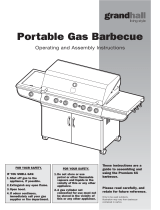 Grand Hall 5009XBHN Owner's manual
Grand Hall 5009XBHN Owner's manual
-
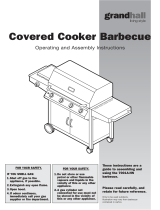 Grand Hall TRADITIONAL 7001A Owner's manual
Grand Hall TRADITIONAL 7001A Owner's manual
-
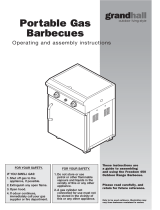 Grand Hall FREEDOM 450 Owner's manual
Grand Hall FREEDOM 450 Owner's manual
-
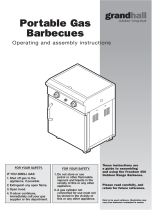 Grand Hall FREEDOM 450 Owner's manual
Grand Hall FREEDOM 450 Owner's manual
-
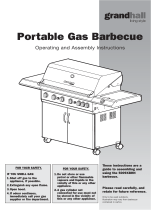 Grand Hall TRADITIONAL 5009XB Owner's manual
Grand Hall TRADITIONAL 5009XB Owner's manual
-
 Grand Hall FREEDOM 425 Installation guide
Grand Hall FREEDOM 425 Installation guide
-
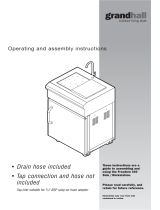 Grand Hall Freedom 440 Owner's manual
Grand Hall Freedom 440 Owner's manual
-
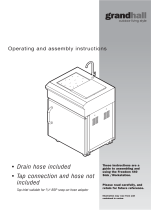 Grand Hall FREEDOM 445 Owner's manual
Grand Hall FREEDOM 445 Owner's manual
-
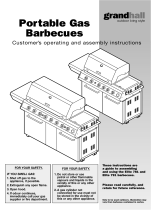 Grand Hall Elite 791 Owner's manual
Grand Hall Elite 791 Owner's manual
-
 Grand Hall FREEDOM 435 Installation guide
Grand Hall FREEDOM 435 Installation guide











































